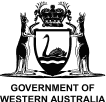Westport has partnered with the Western Australian Marine Science Institution (WAMSI) to deliver the $13.5 million WAMSI-Westport Marine Science Program. This 3-year program is developing the latest data, information and modelling on the complex environmental systems and community values associated with Cockburn Sound.
Project 7.2b: Hearing sensitivity of little penguins
Research theme: Apex Predators and Iconic Species
Researchers: C Wei (Curtin University), C Erbe (Curtin University), B Cannell (UWA).
Publication date: September 2024
New and ground-breaking research has been undertaken to assess the hearing capabilities and sensitivities of little penguins.
The most northern based little penguin colony in WA resides near Cockburn Sound, with the aptly named Penguin Island as their main base.
Although there was an assumption that little penguins can be impacted by man-made noise, as they are wild animals, it has been difficult to ascertain how much little penguins can hear, with only limited studies previously done on the aerial (above water) hearing capability of the black footed penguin.
To resolve this, a new approach was taken. This study used high-resolution computed tomography (CT) imaging of the hearing structures of deceased little penguins to develop a 3D model of a little penguins hearing ‘apparatus’.
This model has allowed researchers to estimate, for the first time, what the hearing range of little penguins might be, both above and underwater, finding they have a broad frequency hearing range between 100Hz to 10kHz.
What the report found
- Sound is important for seabirds (like little penguins). Some penguins can dive as deep as seals and use sound for orientation and identifying prey.
- This suggests that areas of high human activity within the marine environment could result in noise impacts on little penguin habitats and behaviour.
- The predicted hearing ranges identified through the model showed alignment with the known hearing ranges of other diving birds and the African penguin.
How Westport will use the report
This study has provided a benchmark of the hearing range of little penguins that will be used to consider the potential impact of human-made noise on little penguins, and inform mitigation and environmental management programs in Cockburn Sound. The research and model will also be shared with other researchers in the field, providing wider benefit to the broader penguin research community.
Read the full report here.





